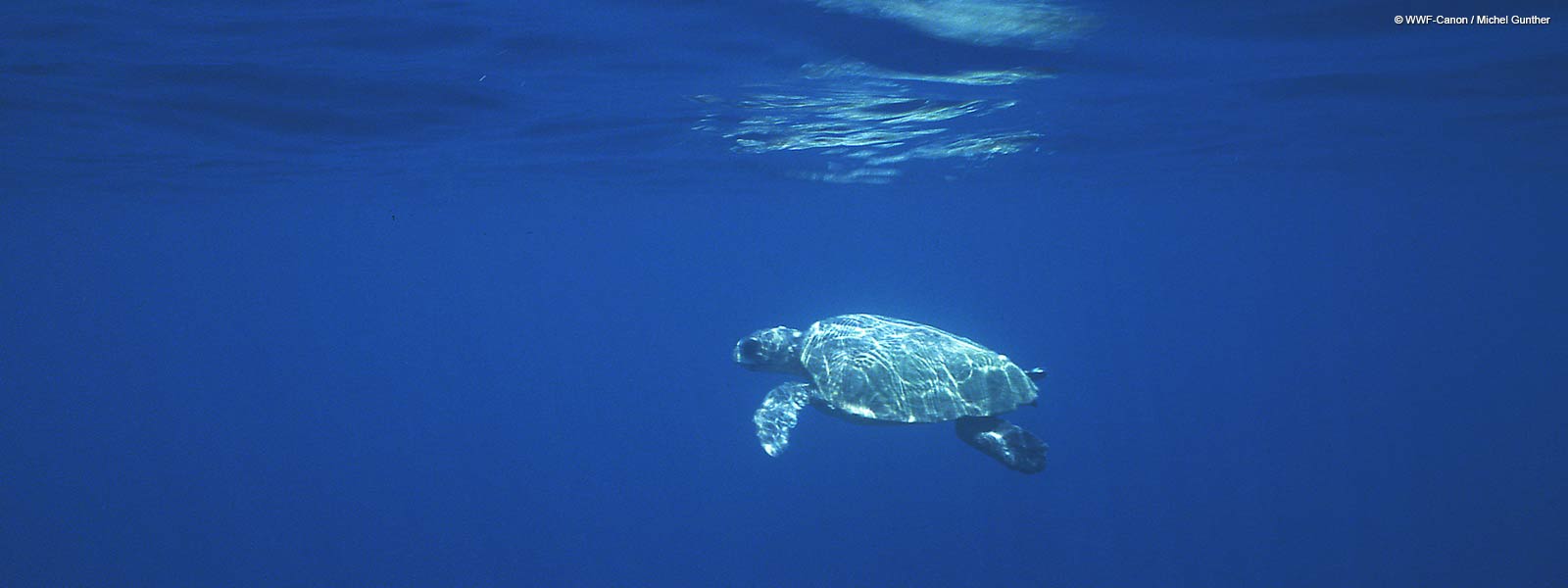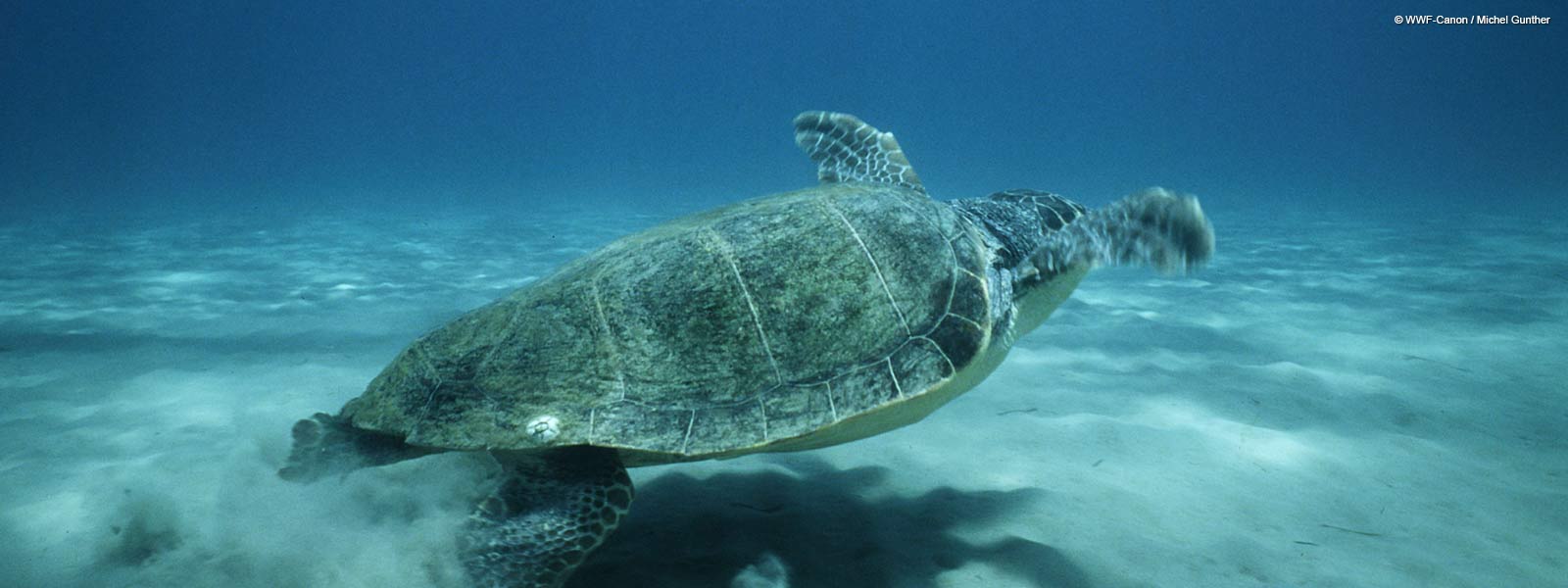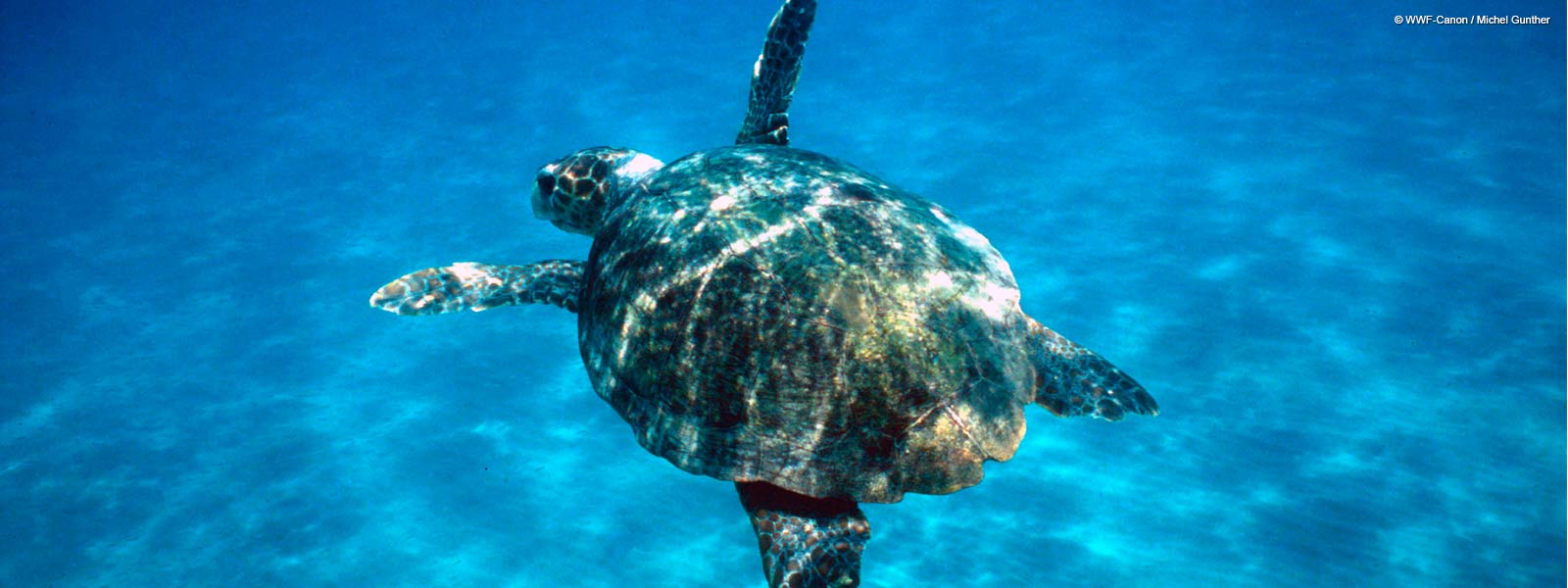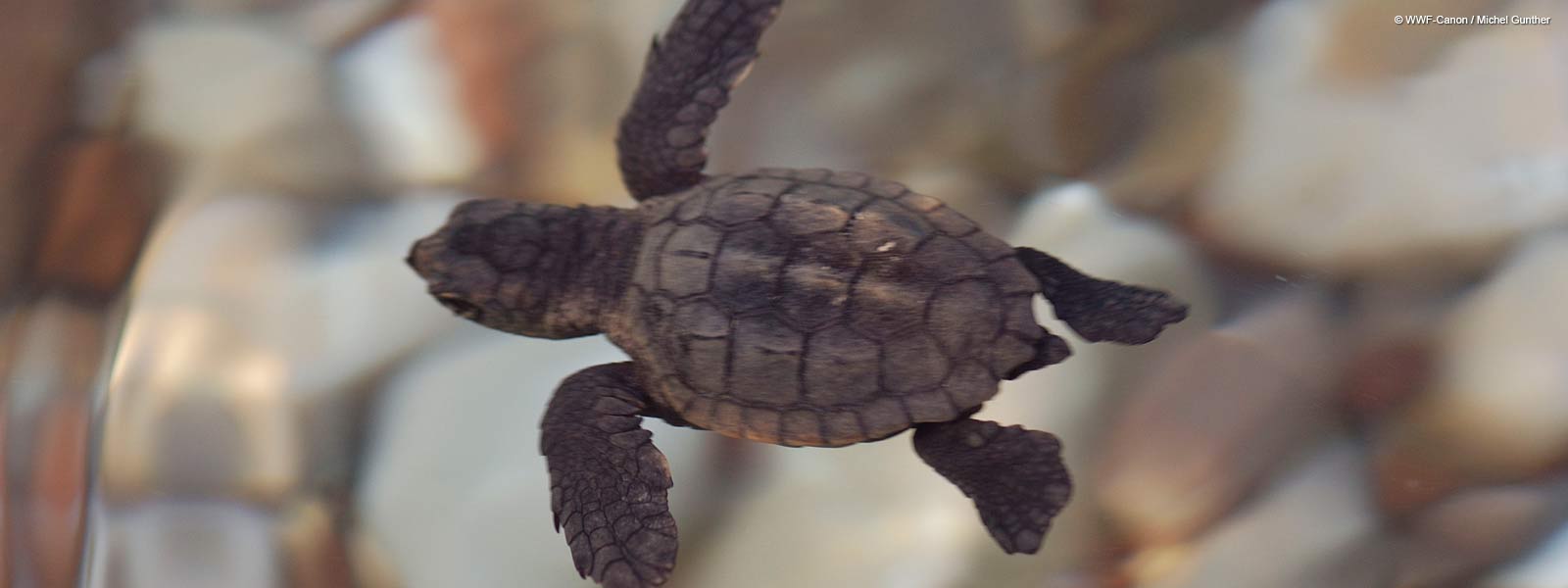The Life of the Loggerhead Turtle
After cracking their egg shells, hatchlings emerge to the surface of the sandy beach and all together head to the sea. They prefer the night or the faint sunlight of dawn. The destination of their course is affected by the brightest horizon they find as they crawl out. It is a challenging and perilous course with enemies lurking in the dark; crabs, gulls, fish and human-generated conditions, such as artificial lights on the beach, are only some of the threats. Only one out of a thousand young turtles will make it to the end of the course and into adulthood. Its survival is one of life’s little miracles.
The loggerheads’ first journey is the most important of their lives, as they rely on their DNA and instinct to find their way. Only if they make it this first time, will they return to the same beach after a couple of decades to lay their eggs and perpetuate their unique species.
Loggerhead turtles (Caretta caretta) are one of the most emblematic species of Greek and Mediterranean waters and one of the seven species of marine turtles on the planet. If they manage to escape their natural enemies as well as human-generated threats and influences, they live about 80 years. When they grow up, roughly after two or three decades, and it is time to breed, they return to the same place and choose to nest in the same beach where they were born. This return makes nesting beaches particularly valuable to the protection and perpetuation of the species.
During each egg-laying season, turtles lay two to three times. Using their rear flippers, they make their nests about 60 centimeters deep in sandy beaches. Every nest holds up to 120 eggs and incubation lasts 55 days. The hatchlings’ sex is determined by the nest’s temperature, which makes sand quality in nesting beaches very important as it can affect populations and their composition.
Life under Threat
The loggerhead turtle is an endangered species according to The Red Data Book of Threatened Animals of Greece (Athens, 2009). Loggerhead turtles can be found swimming throughout the Greek sea, but the country’s particular value to the species is the fact that it hosts some of the most important breeding and nesting beaches in the Mediterranean.
Among the threats that loggerhead turtles face in Greece is the ecological degradation of the ecosystems that host them, such as settlement and tourist development in nesting beaches, construction on the sand, artificial lighting, which disorients the young, and erosion. Climate change also threatens the turtle’s ecosystems and nesting beaches. Additional human-generated threats are the accidental entrapment in fishing equipment and intentional killing.
Notably, 80% of the individuals that were admitted for treatment to the Sea Turtle Rescue Center in Glifada during 1994–2000 had sustained injuries caused by fishing gear and intentional abuse.
An added problem that has been observed in nesting beaches of the Peloponnese, affecting 40% of the nests, is that foxes, dogs and other animals prey on the eggs. Sea waste is another important threat. Specifically, plastic bags degrading the marine ecosystem can lead turtles to their death, as they are mistaken for jellyfish—one of the loggerhead’s favorite meals— and ingested.
The Life We Protect and the Case of Sekania, Zakynthos
Protecting the loggerhead turtle has become a personal affair to us. In 1994, to conserve and protect the species, we organized a European campaign to acquire the area surrounding the Sekania beach in the island of Zakynthos. In a period of uncertainty for the species’ protection, we managed to buy 90% of the area around Sekania with the funds that were raised by the European Commission and the contribution of private individuals. The purpose of the acquisition was to prevent tourist development in the area and to ensure the best possible management to protect Sekania, the sea turtle’s most important nesting beach in the Mediterranean.
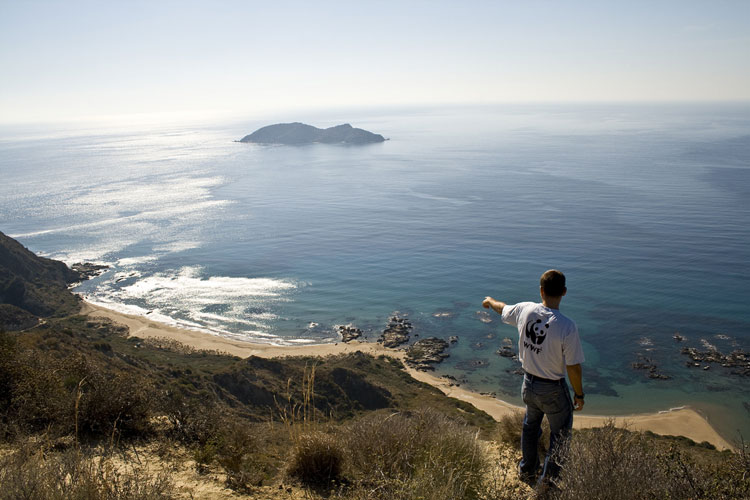
© V. Paravas / Mom
Only 550 meters long, the beach of Sekania is the most important loggerhead turtle nesting beach in the Mediterranean. Every year it hosts 500–1000 nests, which is more than 50% of the total nests in Zakynthos and one of the highest nesting densities for the species in the world.
The beach has been declared an area of absolute protection (A1) through the establishment of a National Park according to the Presidential Decree 966/99. On a practical level, this means that only scientific research is allowed in Sekania. However, the creation of the National Park and the establishment of a protected status did not eradicate threats.
WWF Greece aims at securing this ecologically important nesting beach against tourist development. With constant presence, field work and scientific research, the applied management plan controls all important parameters that may affect the area. Particularly noteworthy is the collaboration with the National Marine Park of Zakynthos. Together with the environmental organizations MOm and Archelon, we sit at the board of the Park’s management body.
A Devastating Fire and Coordinated Long-Term Action
In October 2001, the forest cover of the area was utterly destroyed by a wildfire that was, according to the Fire Department’s findings, arson. WWF Greece quickly mobilized the organization’s members and volunteers and managed to complete small but effective slope erosion control works before the winter rains. Before the next egg-laying season, following a specific study approved by the competent authorities and services, anti-erosion works were carried out in the area’s streams and the sites more susceptible to erosion, and local species of shrubs were planted throughout the area. In addition, large water tanks were installed to allow firefighting vehicles to refill on-the-spot in case of a new wildfire. Since then, always with the contribution of volunteers, WWF Greece maintains these protective works, managing to prevent the destruction of the sea turtle’s nesting beach.
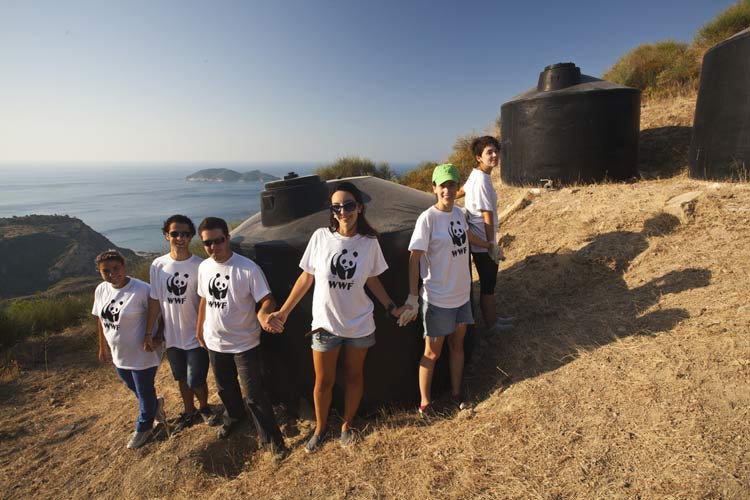
© A. Bonetti / WWF Greece
Every year, WWF Greece carries out cleaning activities in the beaches, monitors and supervises occurrences in the area of the National Marine Park of Zakynthos, such as the operation of a sanitary landfill within the limits of the protected area, intervenes at a political level to promote the implementation of standing legislation, and, in cooperation with other NGOs and the National Park, co-organizes and participates in environmental campaigns and activities.
Project leader: Charikleia Minotou, This email address is being protected from spambots. You need JavaScript enabled to view it., 0030 210 33 14 893
Share this




